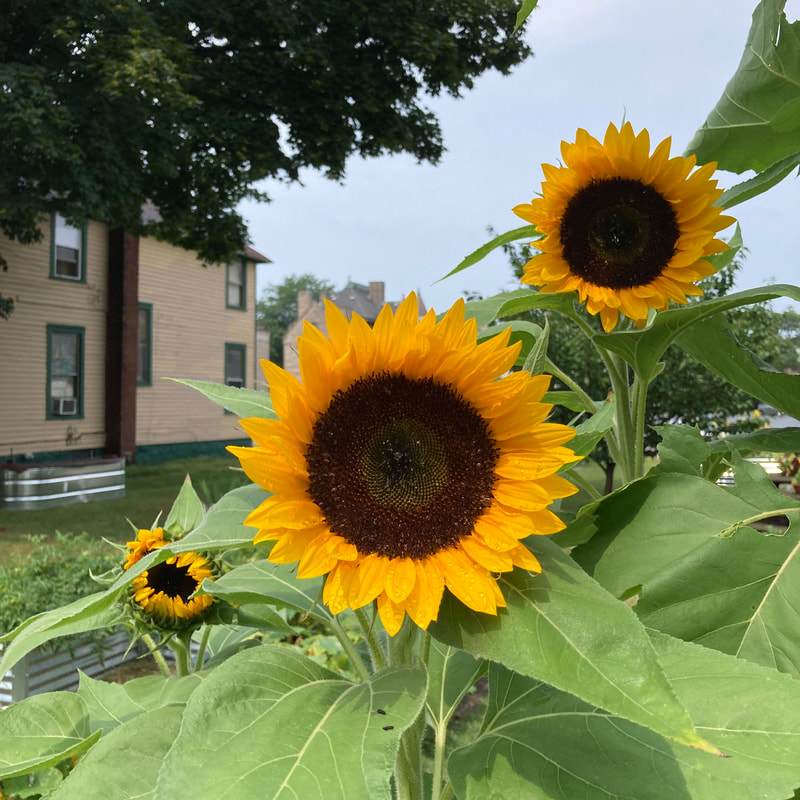|
Photo and article by Donna Iverson A bunny who looked a lot like Peter Rabbit had been circling my garden bed all summer. “Please,” I pleaded with him repeatedly. “Take whatever you want but leave the sunflowers alone.” Last summer, a critter had cut my sunflower plants down to the quick before they bloomed. And Peter Rabbit was a prime suspect. Almost every day during July, I checked the now eight-foot tall stalks waiting for the bright yellow disks to open. The process seemed painfully slow. Then a few days ago, on a sunny summer morning, the yellow flower heads unfurled and faced the sun in all their cheery glory. The rabbit was rewarded with carrots. There are a lot of reasons to grow native sunflowers, with just enjoying their spectacular blooms being number one on my list. For example: Sunflowers can be used to purify your soil. They soak up heavy metals like zinc and copper. And if you can believe it, they also have the ability to remove soil radiation and were planted by the millions around the Fukushima nuclear disaster site in Japan. Farmers plant fields of sunflowers to attract pollinators and birds that eat insect pests, thus improving the odds of a strong harvest. They also make great chicken fodder. On the culinary front, try growing, harvesting and roasting your own sunflower seeds. In the fall, when the blooms are spent, cut the stem about a foot from the flower head and place in a paper bag to dry. Roasting the seeds in a hot oven produces a healthy snack. Native Americans ground the seeds to make sunflower flour, which was mixed with water and Buffalo fat and fried into small cakes. The flowers and seeds were used to make dye, both purple and yellow. The roots were eaten or brewed into a medicinal tea. Crude flutes were made from the stalks by the Navajo. Learning from the Native Americans, the colonists used the stalks to start fires and to make cloth or paper from its fibers. Today, Russia grows the most sunflowers in the world while in the USA, North Dakota holds the record for sunflower production. Almost 2 million acres are planted which are processed into sunflower oil. Lastly, in late fall, you might want to try a garden technique called “chop and drop.” Chop up the sunflower plants and drop them into the garden for a terrific winter mulch.
0 Comments
Your comment will be posted after it is approved.
Leave a Reply. |
Archives
April 2024
Categories |

 RSS Feed
RSS Feed